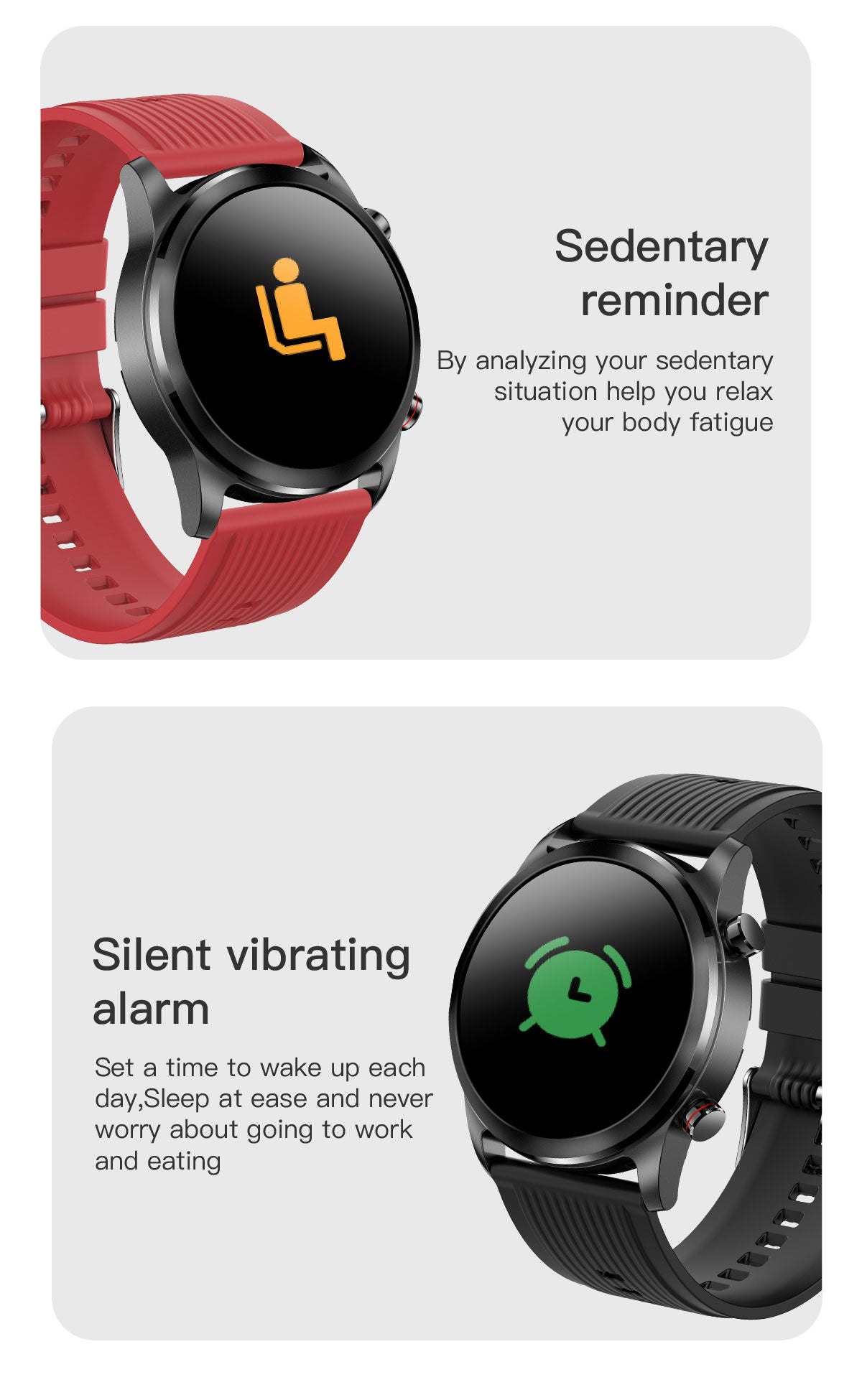Watches with Blood Pressure Monitor
We all know that sitting for long periods of time is bad for our health, but for most 9-to-5 office workers, sitting for hours at a time is very common.
How can we avoid being sedentary for too long and still work and exercise at the same time?
BBC science presenter Dr Michael Mosley explores this topic on his podcast Just One Thing.
Dr. Mosley says something as simple and easy as "sitting less and standing more" can help improve your health. It increases your heartbeat, helps your metabolism, benefits your bones, and it can improve your mental health.
Why is sitting still bad for your health?
Dr. Mosley first pointed out that sitting still for a long time is very harmful to health, but most people inevitably have this "bad habit". Taking the British as an example, many people sit for more than 10 hours a day on average. Unfortunately, sitting for long periods of time can lead to a host of health risks, including an increased risk of heart disease, type 2 diabetes, and more.
You might think that sitting at the desk for long hours every day is not a big deal as long as you live a healthy lifestyle outside of work. Dr. Mosley says that's not the case. He said new evidence shows that unless you do 40 minutes of moderate/vigorous exercise a day, you won't be able to offset the damage caused by sitting for long periods of time.
Worse yet, if you sit for too long, you actually reduce the benefits of exercise. The best thing to do, says Dr. Mosley, is to break up your sedentary habits and get up and move around frequently.
What are the possible benefits of standing up regularly?
Professor John Buckley, professor of applied exercise science at the University center of Shrewsbury in the UK, said that compared with 50 years ago, modern people spend much more time sitting. For example, most people spend 70-80% of their time sitting down, except when sleeping.
Why is sitting so bad for your health? Professor Buckley explains that sitting can slow down your metabolism. When sitting, all parts of the body lose stimulation, from the bones to the circulation to the metabolic system, which is in a resting state.
But humans were originally hunter-gatherers, so the "machine" of the human body was designed accordingly. This means we should be on the move most of the day, except when we sit down to nap, eat, recover, and sleep.
Professor Buckley said the evidence for standing's benefits appeared to be strong, at least when it came to controlling blood sugar.
How to sit less and stand more?
Professor Buckley said that we should always remind ourselves that we need to stand up and move. For example, you can stand up to answer the phone; if you are using a mobile phone, you can also walk and talk at the same time.
He said that if you can stand up two or three times every hour for two or three minutes each time, you will break the bad habit of sitting for a long time.
If you only want to do one thing to improve your health, why not try sitting less and standing more? This simple action can increase heart rate, reduce the risk of cardiometabolic disease, and may provide protection for bones. Standing and combining it with some small movements can increase the total amount of fat burned, and the benefits may be even greater.
For those prone to forgetting to stand up, BP Doctor's sitting reminders can be a helpful tool. With features such as blood pressure, blood sugar, blood oxygen, and sleep monitoring, it aids in assessing and improving overall health.










